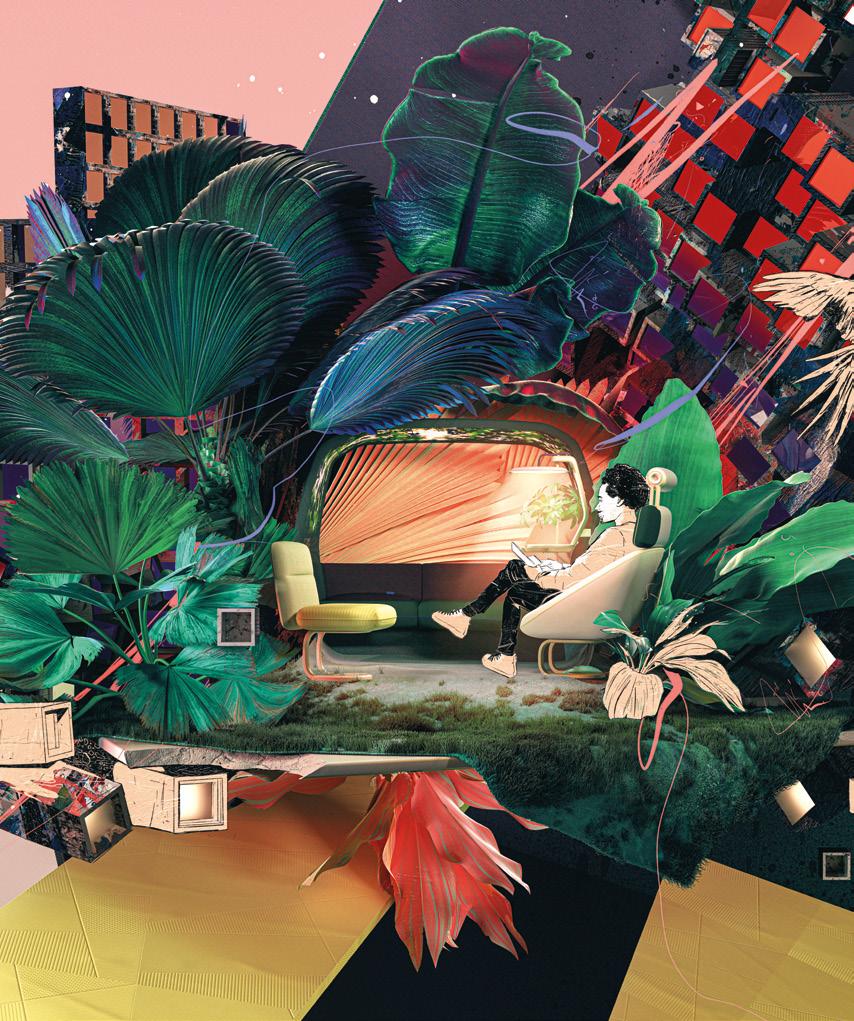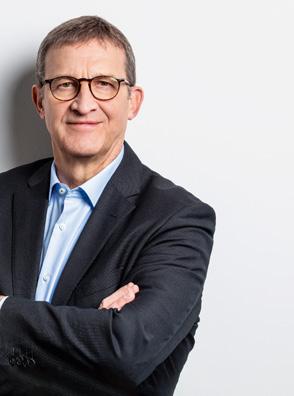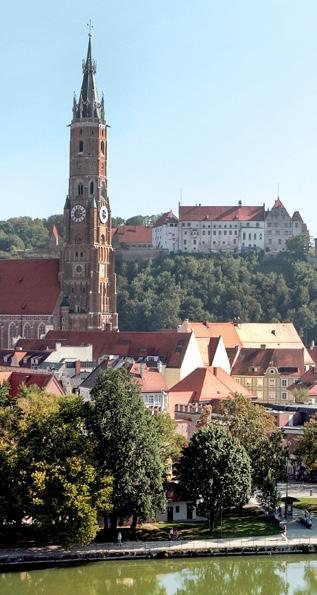
23 minute read
Landshut region
Boom region in the heart of Europe Landshut region
City and district of Landshut: one of the most dynamic areas in Germany
Advertisement
The Landshut region, situated in Lower Bavaria’s western part, is one of the most attractive locations in Europe. Purchasing power, population growth, unemployment rate: In virtually any comparative studies and »rankings« that have been conducted in recent years, the city and district of Landshut occupy top positions among the approximately 400 districts and districtfree cities in Germany. The region is located in the very heart of Old Bavaria – and centrally in Europe. And the local residents have always known how to use the opportunities presented by its geography with a spirit of resolve and sustainability. The Landshut region is a kind of miniature Bavaria – immensely rich in history, cultural treasures and traditions, economically strong and blessed with charming, varied landscapes. Its infrastructure and geographical setting offer significant benefits as a business location: There is the freeway A92 (Munich-Deggendorf), the national road B15 as a north-south axis, the rail-road lines Munich-Regensburg and MunichDeggendorf – and last, but not least: the Munich International Airport, which is located closer to Landshut than to the Bavarian capital itself. A tight grid with over 500 kilometers of superbly developed county roadways stretches between the freeway, national and state roads.
»This is a good place to settle down« – for quite some time, this has been motivating more than a thousand new residents each year to relocate to the Landshut region. While other areas, especially in the east and north of Bavaria, are suffering from rural exodus, the district-free city of Landshut (with ca. 72,000 inhabitants) and the district of Landshut (with ca. 160,000 inhabit-ants) have been experiencing a steady population influx for over four decades now. A broad mix of industries and the economic vitality of medium-sized businesses guarantee a high extent of economic stability. Similar to the neighboring regions of Dingolfing-Landau and Straubing-Bogen in the east or Freising and Erding in the west, unemployment rates in the Landshut region are consistently at a very low level on a Bavarian-wide scale.
In a joint initiative, the city and district are tackling the grand challenge of digitization. Together with the local Landshut University of Applied Sciences, they have launched the LINK e. V. Founders’ Centre. Its purpose is to provide a platform for young, creative start-ups to turn their ideas into reality, to offer them start-up support and a network of like-minded, innovative professionals. Doing so, the region’s vast potential is optimally exploited by the high-quality infrastructure for start-ups in the field of digitization.
Thanks to intelligent and close networking, synergy effects between the prestigious university and the regional businesses also have a highly beneficial impact on many other areas of the economy. Forward-looking, sustainable and consistent: these three premises are the foundation for the decision-making of both the city and the district of Landshut.
Landshut St. Martin’s Church, Trausnitz Castle Landshut University campus life

Shaping futures by Design
Future of Cities
Will the smart city unite nature and technology? Can using instead of owning create new (wiggle) rooms? How can mobility be designed vertically?
MCBW Topic Areas

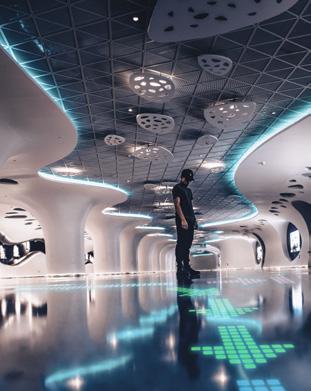
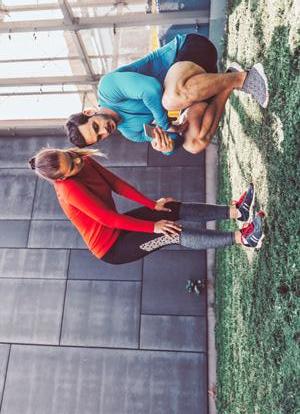
Future of Health
Can a fitness app replace self-care? How can encounters in public spaces be designed? How much information can graphics provide when things get complex? How can we stop disabling people with disabilities?
Future of Communication
How does technology change human interaction? Or how does man change the interactive technology? How can we detect fake news more easily? How much value did the analog media regain during the crisis?

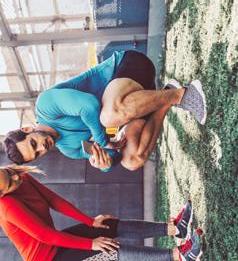
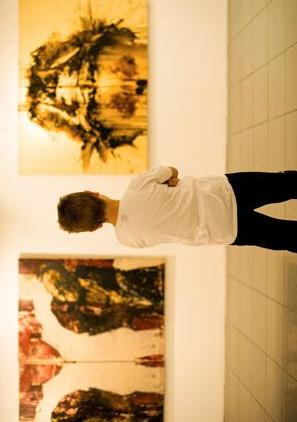


Future of Education
Is the eye involved in the learning process? How can design whet an appetite for knowledge? Can education be fun too? What will learning spaces look like in future? Why is Learning 4.0 imminent?
Future of Security
What will border-crossing look like tomorrow? How do airport security checks work post COVID? What role can design play in ensuring civil liberties? How does culture work without a seat neighbor?
Future of Work
How can corporate culture succeed when everyone works from home? At what point does New Work become normal? How do designers get involved in the workflow of companies? How much co-working can COVID tolerate?

Designing a better future.
But what kind of future do we envision, and how do we know for certain that this future will actually materialize?
The COVID-19 pandemic has taught us that the future is by no means as foreseeable as we wish for out of our need for security and social safety.
Instead, models for thought and action based on the well-established »Keep going« approach are failing by the dozen. This holds true just as much for other global challenges: the ecological crisis, the clash of political systems or the digital transformation. This much is becoming abundantly clear: the 21st century is in dire need of bold visions, utopian potential as well as creative and critical designs in order to develop optimistic perspectives for a profoundly unequal and globally endangered world.
Many designers have long since realized that to work successfully on shaping the future also requires professional design competence. The high degree of specialization of various design disciplines alone is proof of that. Design Thinking has become part of the decisionmaking processes of enterprises, Speculative Design develops critical models for the future while reflecting them back into the present. Social and UX Design puts the individual and society at the center of the design process. And even classic disciplines such as industrial and product design no longer focus solely on what is technically feasible or on both ergonomic and attractive surface design, but rather challenge whether humankind really needs a new product.
The issue of how design can be socially effective is more pressing than ever. How do we want to live, work and communicate with each other in the future? What do we really need, and how can the realization of our existential need for security and personal integrity be ensured? And last but not least: what can design contribute to prepare people for social change more successfully? Design must respond today to these questions about the future – and raise the question about its own future anew in the process.


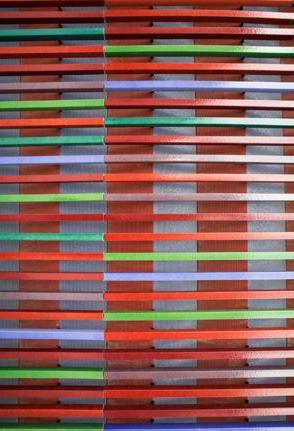
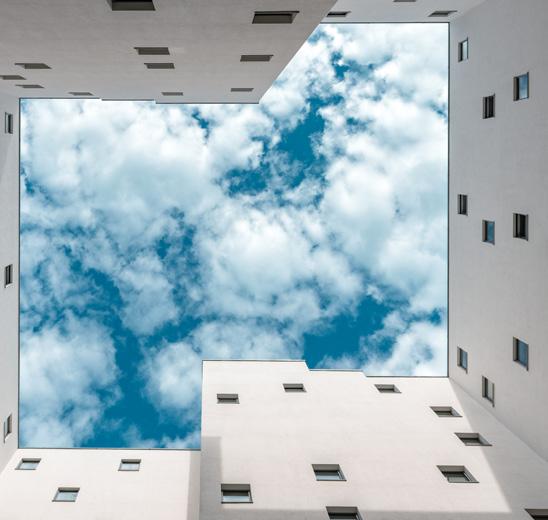
Future of Cities
Urban, mobile, and worth living in
The world is urbanizing more and more. According to surveys by the United Nations, around 70 percent of the world’s population will be living in metropolitan areas by the year 2050. Life becomes cramped. Noisy. Stuffy. Aggressive. Unaffordable. Lonely. The challenges are daunting. Yet they are being taken on by an increasing number of designers who develop innovative solutions for cities and the mobility of tomorrow, drive forward electric motorization, reflect upon drone delivery services, focus on car sharing solutions, and create space and projects for social participation, while keeping both humankind and the environment in mind. They develop health-promoting architecture and plant vertical gardens. Why not convert flat roofs into garden plots? Flowers are sown and radishes are harvested on wastelands, walls or abandoned green strips. In green neighborhood, integration or kindergarten projects, community can be lived and nature in the city can be re-experienced – with all its beneficial effects.
»Cities have always been and continue to be places of hope and longing« – that was the motto of the MCBW panel discussion »City 4.0« two years ago. »It’s where art and culture are, the big theaters, galleries and the subcultural ventures. The fancy boutiques, bars and restaurants, start-ups and agencies. And work. Cities are places of transformation, of innovation and the promise of prosperity.«
The downsides are all too well known: traffic collapse and air pollution, housing shortage and cultural disparities, the gap between rich and poor. Where does the city have a safe space for diversity? For plurality of opinions? For exchange? Prof. Mazda Adli M.D. points out further consequences of city life, stating that the risk of becoming schizophrenic is about twice as high in urban residents as in country dwellers, and the risk of developing anxiety disorders is 21 % higher in the city than in rural areas. He identifies »social stress« as the root cause: too many people on too little space, with barely any connection to each other. The Moriyama House in Tokyo provides an alternative. It offers residents a broad variety of spaces that can be used in different ways: communal spaces, meeting spaces, and private spaces to withdraw into one’s personal sphere. If residents need a kitchen to cook dinner with friends, they simply book it as a temporary addition.
EVENT RECOMMENDATIONS
Screening und Panel: »Five Seasons: The Gardens of Piet Oudolf« 2037 Innovative visualization of digital city and climate models 2009 Sustainably Digital! 2041 Rural Design Days 2049
Details on all events: www.mcbw.de/en
Future of Education
Rethink learning
EVENT RECOMMENDATIONS
Design: Encounter of generations 2034 (Re)Thinking Design. Panel Discussion & Get-together 1724
Details on all events: www.mcbw.de/en
Shaping the future successfully cannot be accomplished without education. But how well equipped are our educational concepts for tomorrow’s society? And how can design competence be used effectively to future proof our educational system?
As early as 2007 and with the motto »Innovating to Learn, Learning to Innovate«, the OECD demanded new educational concepts designed to meet the challenges of the 21st century. The focus of these efforts was not just on economic success, but also on cultural and social participation. Media competence, creativity, cooperation skills and social competence are at the top of the list of so-called 21st century skills. An analysis by the German Zukunftsinstitut also shows that there is consensus about these being essential educational goals for the transformation of the industrial society into a knowledge society. According to the study, the »success criterion for new and old educational programs (...) is their alignment with the requirements for the knowledge society of tomorrow«; and it is not only in the creative economy that »creativity, contextualization, personality, social skills and intrinsic motivation« are decisive for a successful performance on the job market.
However, at least in this country reality shows that there is still room for improvement in achieving these goals. In light of the experiences gained during the corona crisis, it is safe to say that the use of digital media in schools has largely failed. According to the latest Pisa study, an alarmingly high percentage among the 15-year-olds can neither spell nor calculate correctly. Also, educational opportunities for poorer families are still inferior to those


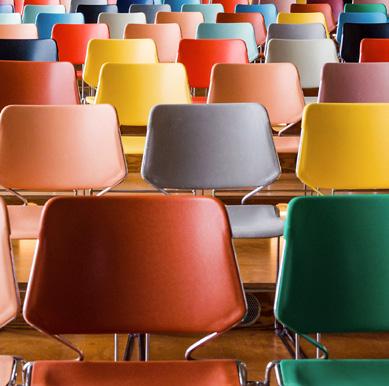
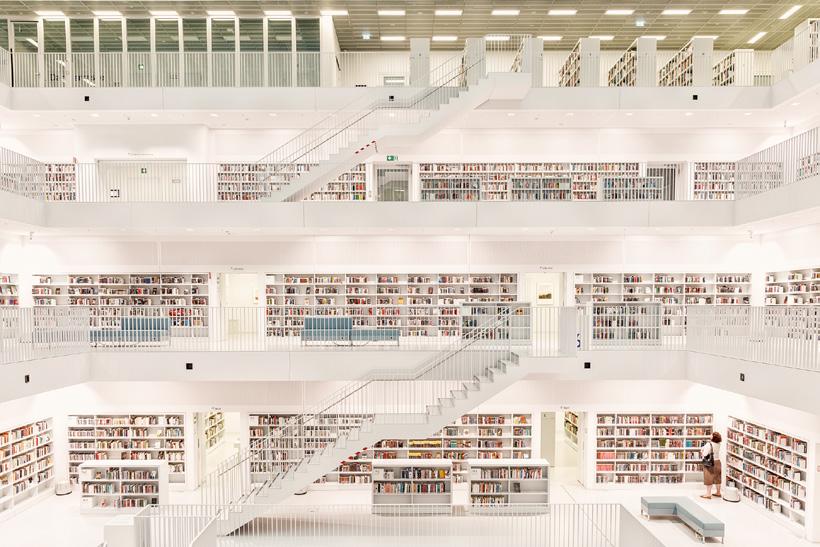

of higher earners. Action is called for and organizational competence is needed. What can Design Thinking contribute to the development of new learning methods, and what can Social Design contribute to the strengthening of social skills? And lastly, what must tomorrow’s state-of-the-art teaching tools look like? Cross-disciplinarity is more essential than ever, and design in its manifold forms provides key competencies to rethink learning.

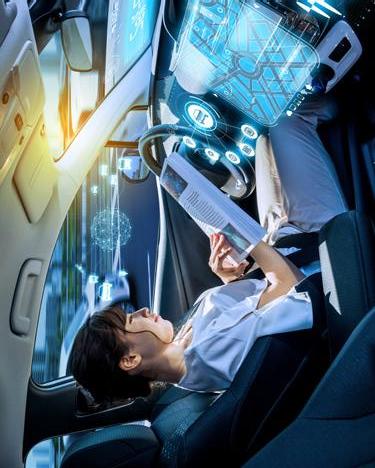

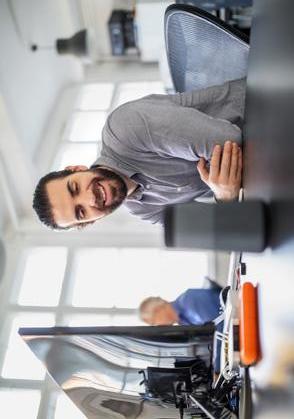


Change is constantly birthing new challenges – and in many cases, the new eludes the immediate controllability. The everyday life of individuals and communities is becoming increasingly complex, and the interaction of technological, social, ecological and scientific aspects makes it hard to identify or calculate problems and risks. This holds true not only for the digital transformation, but also for the ecological crisis, globalization, terrorism, and equally for the rather unforeseeable consequences of pandemics of all types.
There are ample reasons for fears and insecurities, and with them, a growing need for safety. Is our society changing from a »risk society«, as described by the sociologist Ulrich Beck in 1986, to a society of fear? Not too long ago, the German Zukunftsinstitut referred to a »society on permanent alert«, despite the fact that we allegedly live »in the safest of all times«.
Future of Security
Shaping trust in times of risk
So things are not that bad after all? Are the worries and fears of many people merely the result of medial overheating? Or is this rather about readjusting several parameters of our existence to liberate ourselves from the »dictatorship« of a seemingly threatening present and develop new visions of the future, as Harald Welzer, sociologist and publisher of Futurzwei, suggests?
New lines of thought are called for – with design taking the lead as an innovative force and a pragmatic mediator between the disciplines. What can design provide to make life safer – for example, with regard to workplace security as well as cyber security in times of Big Data and cybercrime, and also in the domestic environment to keep control of the Smart Home? What does the ideal passenger cabin look like in the era of autonomous driving, and how are the controls designed to ensure optimum safety? What can safety design contribute to environmental protection by using new materials and manufacturing methods – and what can urban planning contribute to the design of living spaces to counteract social disruptions in a transforming society?
With their human-centered approach and work methods, designers are instrumental in ensuring actual and perceived safety and thus play a key role in shaping people’s trust in a future worth living in.
EVENT RECOMMENDATION
Forward-looking trademark protection 2035
Details on all events: www.mcbw.de/en
Future of Work
Cooperation instead of competition
EVENT RECOMMENDATIONS
»New Work« – We shape the change 2057 Smart Research and Development Ecosystems 1740 New Work–New Life 2051 Assessing the Future of Work with Scenarios and Personas 2047
Details on all events: www.mcbw.de/en
When in mid-March 2020 the Bavarian Government declares a state of emergency, it changes the customary work culture in a flash. Whoever can, works from home. And lo and behold: cooperations, votings and conferences work better than expected across the boundaries of space and time. While at the beginning of 2020 the video conferencing service »ZOOM« counted ten million participants daily, it was 300 million per day by April, according to heise online. Remote work suddenly becomes the driver of digitization. From the realm of the future, it has arrived in the present – basically overnight.
Although for a long time company managers were quite reluctant towards the remote working option, now they seem surprisingly receptive to it. Siemens is considering two to three remote work days per week for their employees, Allianz speaks of 40 percent of their staff working from home. This goes hand in hand with the decrease of required work spaces as well as the reassignment and the flexible use of these spaces. How do they become places where the power of team spirit can blossom anew? How do analog and digital encounters support each other reciprocally? How creativity and stringency? Experiment and responsibility? What functions can co-working spaces assume? And how can COVID safety rules be intelligently observed in the process?
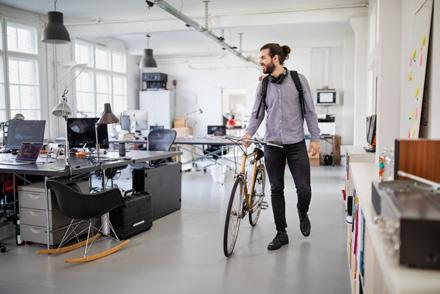



In a globalized world, issues and tasks grow more and more complex while at the same time, innovation cycles become shorter each day. Without continuous learning, without the multi-layered, open-minded interaction of experts and generalists, sustainable solutions are hardly imaginable. This requires new qualities from all parties involved: control shall be replaced by trust, boundaries by openness, instruction by personal responsibility, owning by sharing, competition by cooperation. With regard to the protection of the environment, the democratic society, freedom and diversity, it also becomes increasingly important to question the meaningfulness of one’s own actions.
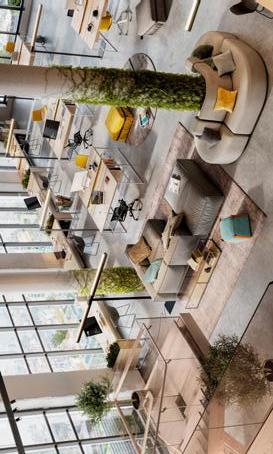
A new corporate culture no longer solely strives to maximize profits but also to enhance the ecological and social benefit. Higher? Faster? Farther? The rational performance society has arrived at its end. The era of the creative industry has already begun.
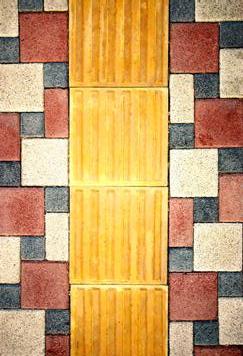
In the 2020 Value Index published by Trendbüro and Kantar in mid-February 2020, i. e. before the pandemic hit Germany, the value »health« ranked first. In times of COVID, we see a reinforcement of what we have already experienced before, and what the designer Otl Aicher once phrased so aptly: »There is not one single thing that stands for itself«. Health can no longer be considered isolated from environmental aspects as well as from issues of urban planning or the work environment. In fact, studies have shown that hospitalized patients recover more swiftly from surgeries if they can look at the greenery from their bed and maintain social contacts. For designers in particular, the interaction between humankind and the environment creates new areas of work. How can the positive effects of nature and social participation be integrated more effectively into urban or spatial design? How must signage systems be designed so that the risk of infection can be reduced significantly? How can complex health topics be illustrated in a comprehensible way?


Long before the pandemic, the desire for self-optimization has been flourishing, yielding odd results at times. But as the pandemic experience progresses, the need to assume responsibility for

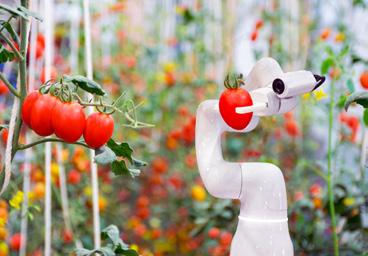
Future of Health
For all is connected
our own health is growing – starting with nutrition. During the lockdown, the new joy of home-cooking is taking hold, with bread baking machines, cookbooks and cooking blogs booming. Fresh foods, preferably from regional farming, continue to gain importance. People who don’t work from home bring their daily meals, and uncool lunch buckets turn into chic boxes. The lack of exercise that comes with staying at home along with eating well soon leaves its marks at hip level, reminding us of the three key elements of a healthy lifestyle: diet, exercise and relaxation. Fitness trackers help us achieve our individual goals and are constantly being launched on the market with new designs and features.
Especially in the health sector, designers are facing enormous challenges, which in turn will foster the interdisciplinary interaction of scientists and designers: How can digitization contribute to relieving the workload of medical and nursing professionals? How can digitization improve social participation in times of visitor bans, and how should it be designed?
How can design contribute to radically reducing the risk of infection at the workplace and in streetcars, buses, trains or airplanes? Regardless of the discipline designers are coming from, their special skills are vital to finding solutions for the challenges of today and tomorrow.
EVENT RECOMMENDATIONS
Feel the heartbeat of healthcare transformation 2101 Build great services–people-centric, economical and sustainable 2050 Breaking down silos–Connected healthcare co-created 2054 Best of Decade – Universal Design 2070 Playgrounds for tomorrow: Breaking the Inconvenience 2033
Details on all events: www.mcbw.de/en
Future of Communication
Communication is everything
EVENT RECOMMENDATIONS
Forward Festival Munich 2021 2067 Brand Design Master Class 1745 MCBW DESIGNWALK 2060 DIS CONNECTED 2086 hw.design conceptualizes branding & communication 2028 Brand & Space: Relationship Strategies for an Unlikely Couple 2085
Details on all events: www.mcbw.de/en
From smartphones to out-of-home campaigns – communication is happening all the time, everywhere. Paul Watzlawick’s notion that »one cannot not communicate« has since been widely acknowledged, and so has the fact that new technologies will assume a key role in tomorrow’s communication. The unprecedented profits made by Apple, Microsoft, Amazon and Facebook during the COVID pandemic speak volumes, as does a survey by the analytics platform »App Annie«, according to which the average smartphone user spends 3.7 hours a day on their phone – with an upward tendency.
The translation of technological innovation into usability calls for a high degree of design competence: Technology has to be designed by people for people. What will the smartphone of tomorrow look like, and the future of communication in commerce? And what is the future of communication in retail? Does the appealing user interface meet the requirements of the social media platform, or should design go much deeper than that? What will become of every-day analog communication in times of social distancing? And last, but not least: What can design offer to ensure peoplefriendly communication?
Communication ethics increasingly involves media ethics as well. In this context, the question of transparency is becoming a decisive factor for the acceptance of new technologies and their applications. Does this mean that the holistic perspective on brands has become obsolete in times of chat bots and attention hacking? Does it require new design strategies, and what can design contribute to fulfilling its responsibility toward society? Because one thing is for sure: Communication is everything. It must, however, be shaped.
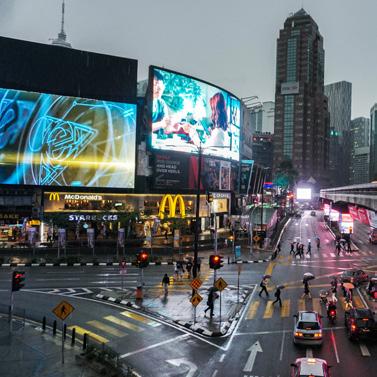

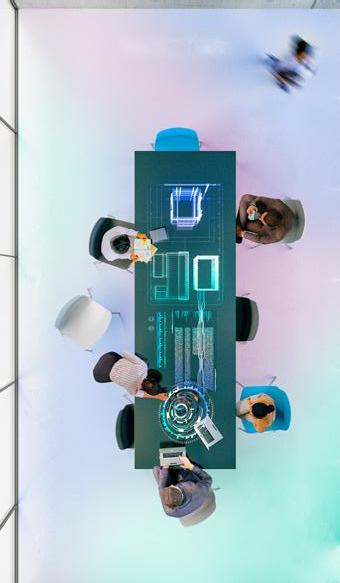

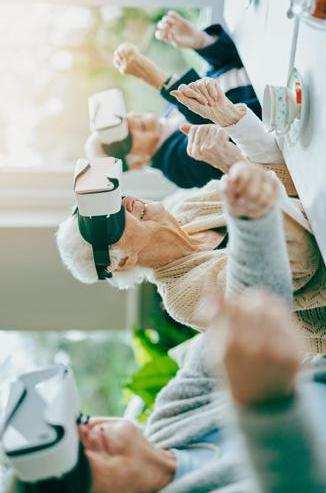
Hunger auf Design?


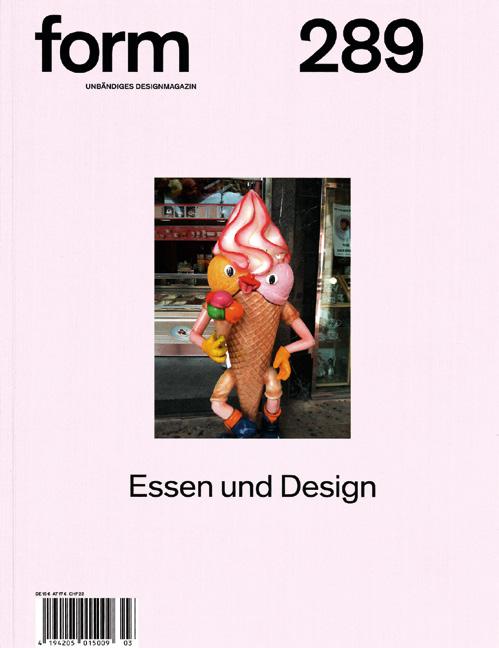
DO WE NEED A REVOLUTION?
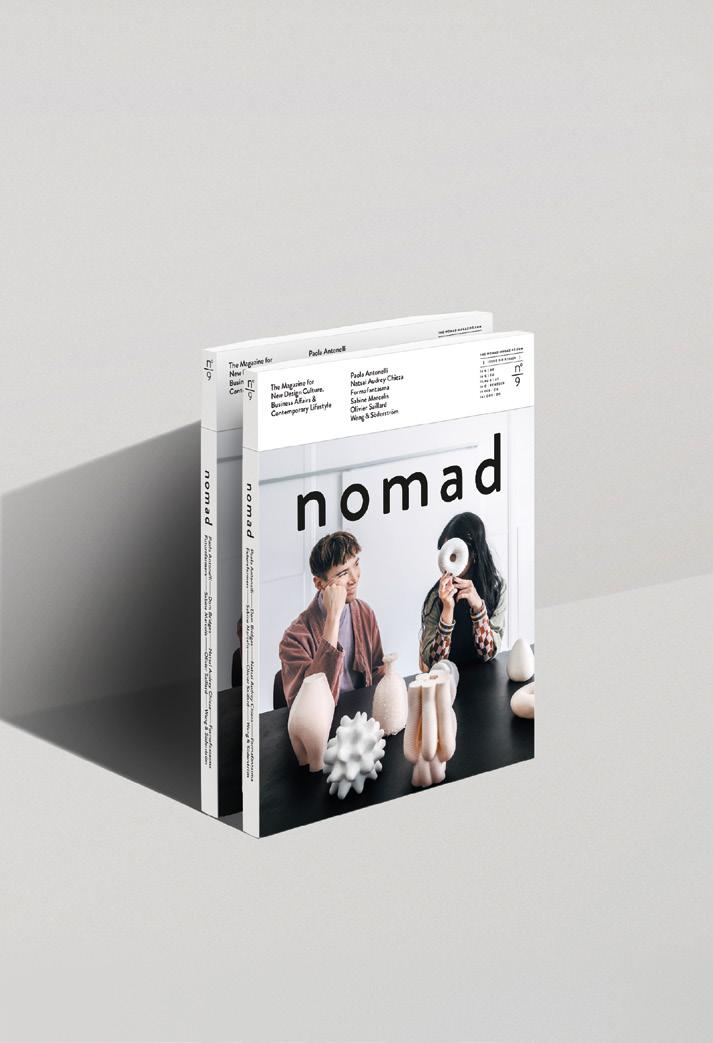

Paper at its finest
Experience exclusive image papers in appealing colours, with extraordinary surfaces and structures as well as fascinating haptics. Whether it’s metallic tones or elegant transparency – your creativity will know no bounds. With us, you will find over 100 qualities for countless possibilities. So that you and your projects are guaranteed to attract the attention you deserve. Experience the diversity at www.wir-leben-papier.de
MCBW DESIGN KINO
Film art for home
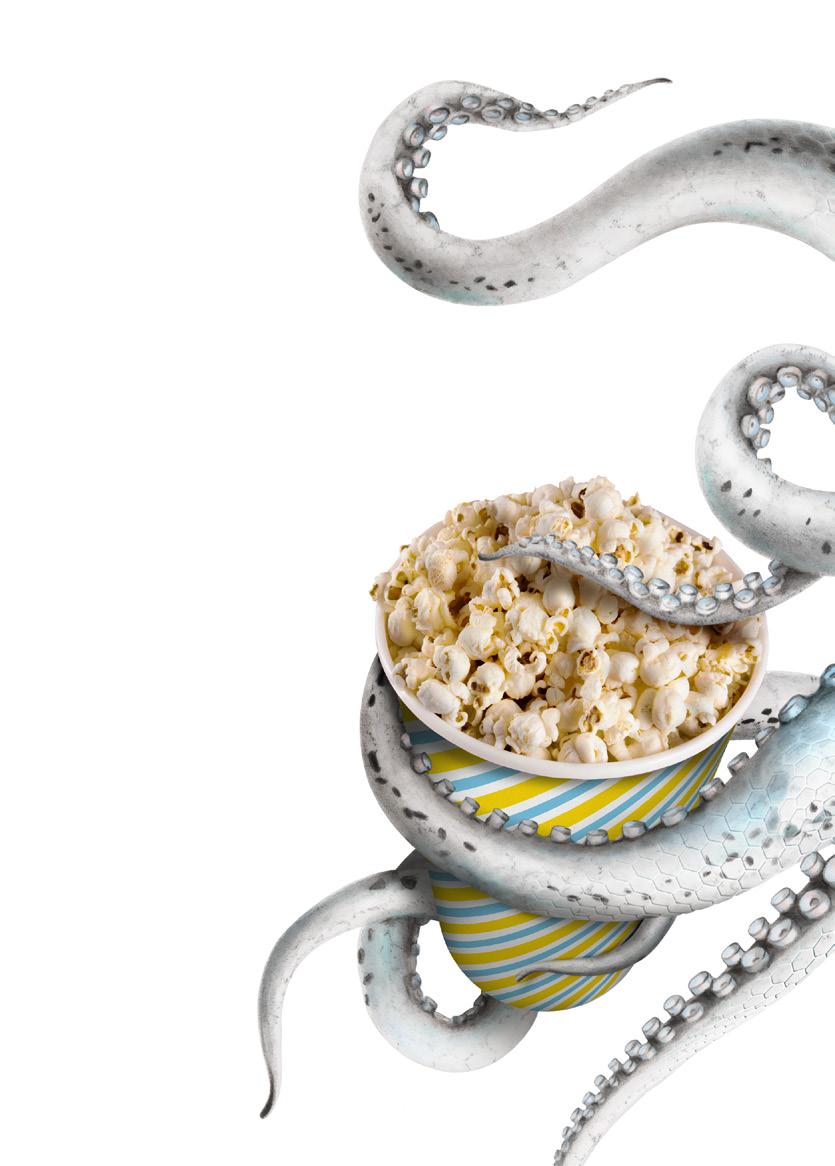
6 to 14 March 2021
www.mcbw.de/en/designkino #designkino
In 2021 also via ONLINE Stream
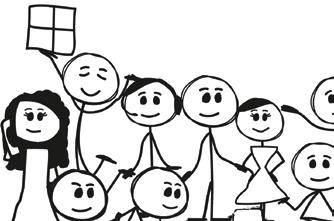


MCBW Design DESIGN connects! KINO

The long week of design Film art for home 5 to 13 March 2022 6 to 14 March 2021 One selected design film each evening as a free stream on the MCBW website.
We thank
HOST
PATRON
SPONSORS
City of Munich
PARTNERS
SPONSORS MCBW GUIDE
MEDIA PARTNERS
Press information and contact
KEEP UP TO DATE
News
www.bayern-design.de/en/news
www.facebook.com/ MunichCreativeBusinessWeek
www.instagram.com/ munich_creative_business_week
Website
www.mcbw.de/en/press
PRESS CONTACT
Maria Große Böckmann Engel & Zimmermann AG Communications Consultancy Schloss Fußberg, Am Schlosspark 15 82131 Gauting near Munich
Phone +49 89 893 563 3 E-mail pressoffice@mcbw.de
When using image and text data, kindly send us a link or a sample by post or PDF.
Information
To plan your visit to the MCBW, our telephone hotline is available Mon – Fri from 9 am to 6 pm, and every day during the MCBW from 6 to 14 March 2020.
The same applies to our digital chat feature on the MCBW website. You are also welcome to contact us by e-mail.
Phone +49 89 38 66 76 60 E-mail service@mcbw.de
Further information can be obtained at www.mcbw.de/en
All events at a glance
All you need to know about the MCBW 2021 can be found in this MCBW Guide. The enclosed MCBW Program Navigator will guide you through this year’s wide range of events. Whether it’s a conference or a workshop, an exhibition or a campaign – here you will find an overview of the events during the MCBW 2021 (as of December 2020).
Events highlighted in yellow are aimed at the design-savvy public, events for professionals are highlighted in blue. The respective events are marked with an ID. Simply enter this event code in the search function of the MCBW website www.mcbw.de/en/search to get further information on the program.
The MCBW 2021 program will be continuously updated online. This will keep you informed at all times about any short-term changes.
www.mcbw.de/en


Legal notice
ORGANIZER OF MUNICH CREATIVE BUSINESS WEEK (MCBW) bayern design GmbH
Luitpoldstraße 3 90402 Nuernberg Phone +49 911 24022-30 Fax +49 911 24022-33 www.bayern-design.de
Coordination Office Munich
bayern design GmbH Schleißheimer Straße 4 80333 Munich Phone +49 89 520356-61 Fax +49 89 520335-96
Organizer
MCBW is organized by bayern design GmbH, whose mission is to sustainably enhance design strategies in corporations. The idea is to emphasize the impact of the creative industries in in order to position the Free State as an internationally recognized hotspot for innovations and design. The networking of regional and international partners is of paramount importance in the process. The activities of bayern design GmbH are supported by the Bavarian State Ministry for Economic Affairs, Regional Development and Energy. MCBW is additionally funded by the City of Munich. BMW Group, Steelcase, and Ströer provide substantial support as MCBW partners. Regional partner is the Lower Bavarian region of Landshut. In addition, designaustria provides exciting design stimulus from Austria in 2021.
Concept, Design & Production
Kochan & Partner, Hirschgartenallee 25, 80639 Munich, www.kochan.de The MCBW word and figurative mark has been developed by Kochan & Partner. The Slate Pro font used in the MCBW Guide has been provided by Monotype: www.monotype.com
Paper
Cover paper 240 g/qm LonaArt, distributed via inapa Deutschland GmbH www.inapa.de Content paper 90 g/qm Retiquette 1.2, distributed via UMP Sales GmbH www.upm.com
Printing and Binding
Gotteswinter und Aumaier GmbH Joseph-Dollinger-Bogen 22, 80807 München www.gotteswinter.de
Editor
Katrin Engelmann
MCBW Program Navigator
Concept & Design: Manuel Haugke (www.haugke.com)
Photo Credits
Bavarian State Ministry for Economic Affairs, Regional Development and Energy; City of Munich; Regional partner Lower Bavarian Region of Landshut; BMW Group; Ströer Media Germany GmbH; Steelcase; bayern design GmbH; LÉROT; Kochan & Partner; Getty Images; iStock.com/aislan13; iStock.com/alice-photo; istock.com/anilakkus; iStock.com/anyaberkut; Stock.com/alvarez; iStock.com/Cecilie_Arcurs; iStock.com/ Deagreez; iStock.com/dem10; iStock.com/digitalimagination; iStock.com/Fgorgun; iStock.com/FluxFactory; istock.com/franz12; iStock.com/golero; iStock.com/Grafissimo; istock.com/Jonya; iStock.com/metamorworks; iStock.com/natasaadzic; iStock. com/Nikada; iStock.com/Nomadsoul1; iStock.com/nortonrsx; istock.com/onlyyougq; iStock.com/piranka; iStock.com/siraanawong; iStock.com/sompong_tom; iStock.com/ U.Ozel.Images; iStock.com/William Rodrigues dos Santos; iStock.com/Zhang Sue; Ociacia/Shutterstock.com; federico-rizzarelli-XamaAMClSP0 by Unsplash; kah-haychee-xuElil9fmfg by Unsplash; Illustration: Katharina Rücker-Weininger We apologize if, despite careful research, not all image sources may have been named in full.
Copyright © bayern design GmbH, Luitpoldstraße 3, 90402 Nuernberg, Germany

Wir erreichen Ihre Zielgruppe –online und offline!
Die Ströer Gruppe bietet ein breites Portfolio an Kommunikations- lösungen, die Marken und Produkte mit Zielgruppen verbinden. Die Mittler sind die Werbeträger und -formate der Online- und Out-of-Home-Medien. So erreicht Ströer Menschen überall dort, wo sie leben und sich bewegen – national, regional, lokal oder hyperlokal.
